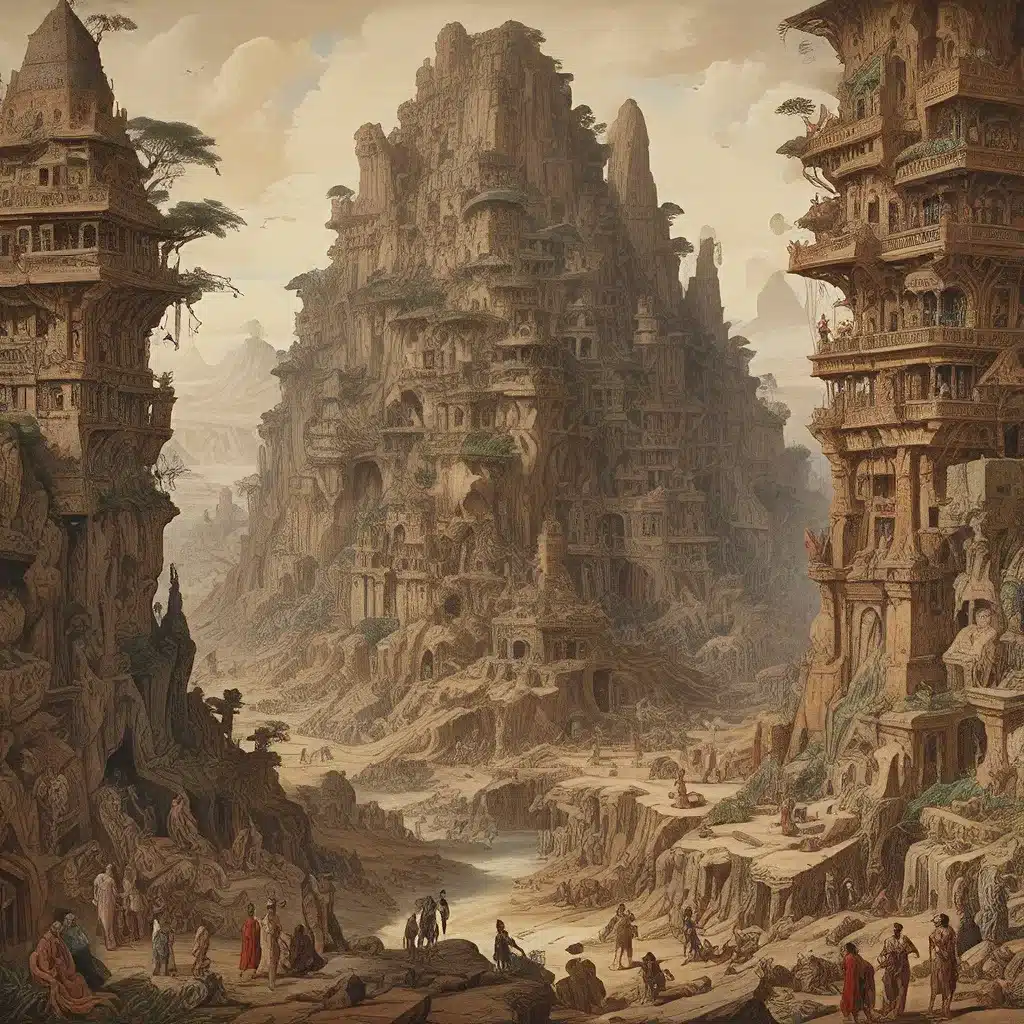
Unraveling the Threads of Ancient Civilizations
The study of ancient civilizations is akin to piecing together a grand, multilayered tapestry, where each thread, each fragment, holds the potential to unveil the captivating narratives of lost worlds. From the enigmatic cultures that thrived in the distant past to the archaeological marvels that continue to captivate and inspire, the field of ancient history is a veritable treasure trove of insights and mysteries waiting to be unlocked.
One of the most intriguing aspects of ancient history is the idea of the palimpsest – a metaphorical concept that likens the layers of history to a manuscript where subsequent texts have been written over the faded remnants of earlier writings. Just as a palimpsest reveals the ghostly traces of its past, so too do the archaeological sites and cultural artifacts of bygone eras hold the key to understanding the intricate, overlapping stories of human civilization.
Uncovering the Secrets of Lost Kingdoms
Consider the enigmatic rise and fall of the ancient civilizations that once dominated vast swaths of the globe. From the grandeur of the Aztec Empire to the mysterious disappearance of the Maya, each culture has left behind a tantalizing trail of clues that challenge our understanding and inspire new theories. Through the painstaking work of archaeologists, historians, and linguists, these lost kingdoms are slowly being resurrected, their stories unfolding like the careful peeling back of layers in a palimpsest.
The discovery of ancient sites, such as the breathtaking ruins of Machu Picchu or the awe-inspiring structures of Göbekli Tepe, has captivated the public imagination and spurred a renewed interest in understanding the complexities of our shared human history. These archaeological marvels not only reveal the technological and artistic achievements of their creators but also shed light on the social, political, and spiritual forces that shaped the development of these long-vanished civilizations.
Deciphering the Clues of the Past
The task of unraveling the histories of ancient cultures is no easy feat, however. Archaeologists and historians must delicately sift through the fragmented remnants of the past, piecing together the puzzle using a diverse array of evidence, from inscriptions and artifacts to architectural remains and environmental data. Each discovery, each newly translated text, has the potential to radically shift our understanding of the past, challenging long-held assumptions and opening the door to new and exciting interpretations.
The decipherment of ancient scripts, such as the Maya glyphs or the Mesopotamian cuneiform, has been a particularly transformative development in the field of ancient history. These linguistic breakthroughs have allowed scholars to access the direct voices and perspectives of the people who inhabited these lost worlds, shedding light on their belief systems, social structures, and historical trajectories.
Similarly, the application of advanced analytical techniques, from carbon dating to DNA analysis, has revealed new insights into the lives and environments of ancient peoples. By studying the chemical compositions of pottery shards or the genetic profiles of ancient human remains, researchers can uncover a wealth of information about trade networks, migration patterns, and even the dietary habits of long-extinct civilizations.
Embracing the Mysteries of the Past
As the field of ancient history continues to evolve, with new discoveries and technological advancements pushing the boundaries of our understanding, it is important to embrace the inherent mysteries and uncertainties that come with the territory. The past, like a palimpsest, is not always easily decoded, and there will always be gaps, contradictions, and unanswered questions that challenge our current theories and interpretations.
However, it is precisely this sense of mystery and discovery that makes the study of ancient civilizations so captivating. Each new finding, each reinterpretation of the past, offers the potential to rewrite the narratives we hold dear, to challenge our preconceptions, and to uncover the hidden complexities of the human experience across millennia.
By engaging with the layered histories of lost worlds, we not only expand our knowledge of the past but also gain a deeper understanding of the forces that have shaped the present. The study of ancient civilizations is a continuous act of discovery, a journey of intellectual curiosity and cultural exploration that promises to yield insights and perspectives that will continue to captivate and inspire generations to come.
Conclusion: Navigating the Palimpsest of History
As we delve deeper into the primal palimpsests of ancient history, we are confronted with a tapestry of stories, each thread intertwined with the next, revealing the intricate and often surprising connections that bind us to our shared past. By embracing the mysteries and complexities of these lost worlds, we open ourselves to a richer, more nuanced understanding of the human experience, one that transcends the boundaries of time and space.
The study of ancient civilizations is not merely an academic pursuit; it is a journey of discovery, a means of connecting with the echoes of the past that continue to resonate in the present. Through the careful unraveling of these layered histories, we gain a newfound appreciation for the resilience, ingenuity, and adaptability of the human spirit, and are reminded of the enduring power of our collective legacy.
As we continue to explore the primal palimpsests of the past, let us approach this task with a sense of reverence, curiosity, and wonder, knowing that each new discovery has the potential to transform our understanding of the world and our place within it. For in the end, the stories of these lost worlds are not just relics of the past, but living, breathing testaments to the rich tapestry of human civilization.


